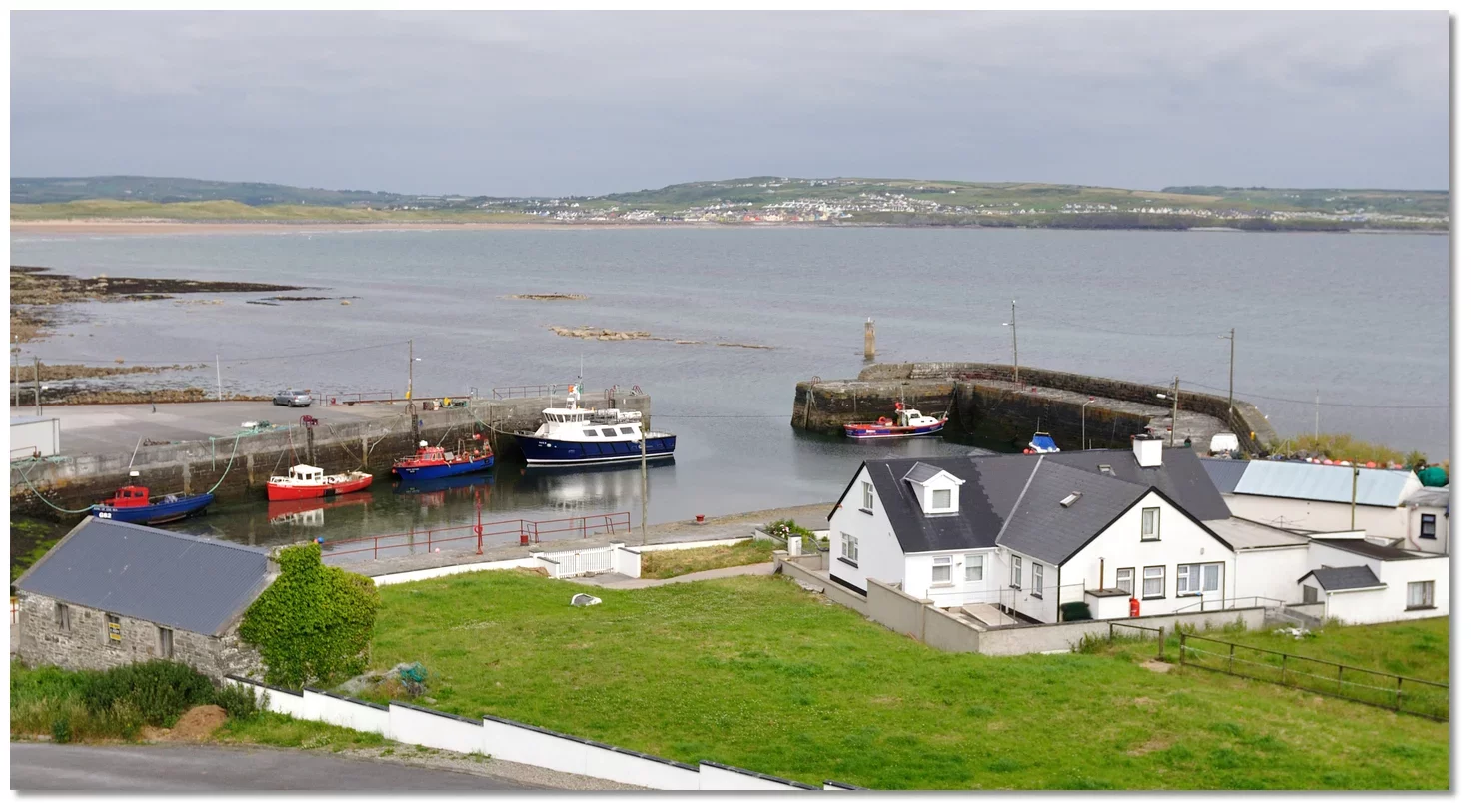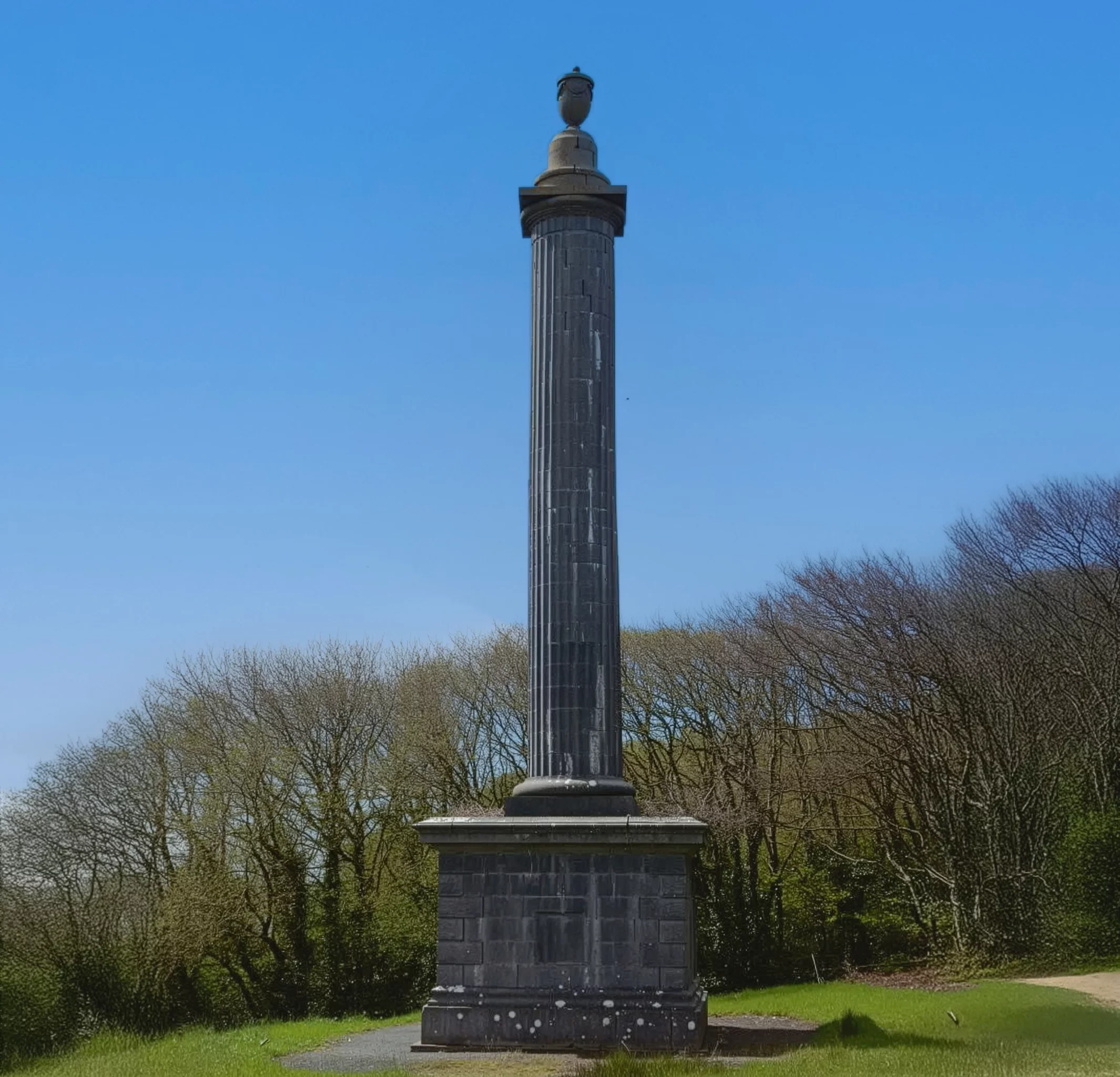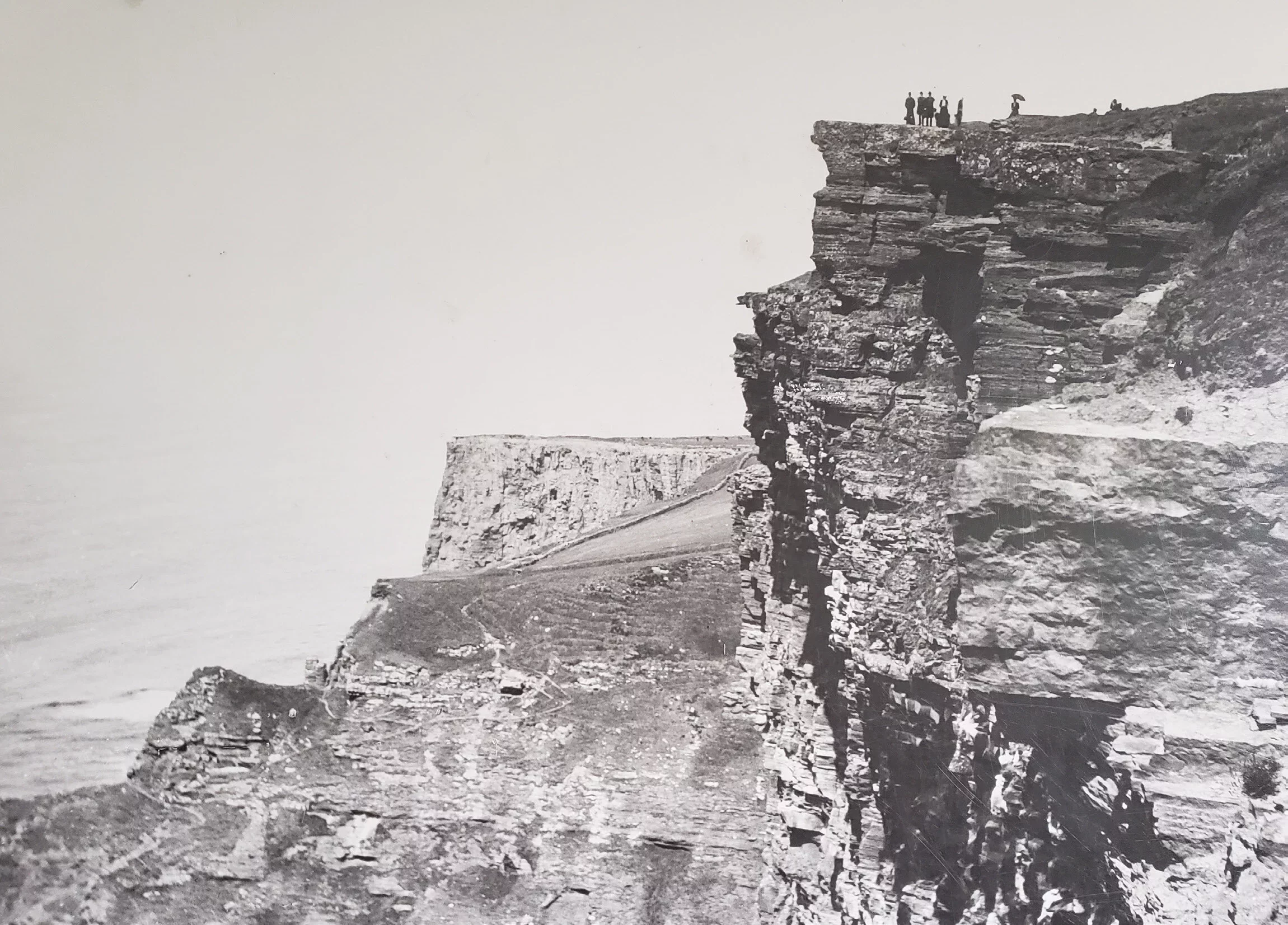Liscannor Harbour & Pier - Stone, Sea, and Stories

At the heart of the village lies Liscannor Harbour, a sheltered inlet where stone meets sea. Built in the 1820s, the harbour was more than just a pier — it was a lifeline, a place where the wealth of Clare’s hills and the bounty of the Atlantic flowed outward to the wider world.
The harbour is most famous for one export: Liscannor flagstone. From the nearby quarries, slabs of blue-grey stone were carted down to the waterfront, their surfaces etched with fossil ripple-marks left by ancient seas. Loaded onto ships, these stones travelled far beyond Clare, paving the grand streets of London, Paris, and New York. To walk along parts of Victorian London is, in a way, to walk upon Liscannor. Each block carried with it a fragment of the village — its geology, its labour, its mark on the world.
But the harbour was not just industrial. Fishing boats crowded the pier, their nets cast into the bay for mackerel, herring, and lobster. Families depended on the tide’s return. The air would once have been filled with the cries of gulls, the creak of timber hulls, the chatter of traders haggling over their goods. On market days, carts of stone might stand alongside baskets of fish, the pier alive with the rhythms of both land and sea.
The harbour also witnessed hardship. The Great Famine of the 1840s cast a shadow over the west coast. Emigration ships, some of them departing from nearby Clare harbours, carried families across the Atlantic, many never to return. The stone that built cities abroad was the same stone left behind in abandoned cottages, silent reminders of lives uprooted.
Today, Liscannor Harbour still works quietly, its stone pier polished by centuries of tide. Fishing boats still tie up, and on summer evenings, locals stroll the quay to watch the sunset paint the cliffs in gold. Children dangle lines for crabs, tourists stop to photograph the colourful boats, and the air smells of salt and seaweed.
The harbour is also the departure point for boat tours beneath the Cliffs of Moher, offering a view of the cliffs from the ocean that few forget — walls of stone rising like cathedrals, seabirds wheeling above. From here, the link between Liscannor and its cliffs is clear: the village at the water’s edge, the cliffs at the horizon, both tied together by the harbour.
Why it matters
Liscannor Harbour is more than a pier of stone blocks. It is a living monument to the village’s history — a place where geology became commerce, where families earned their bread, where the Atlantic was both giver and taker. To stand on the pier today is to feel the weight of all those stories: of quarrymen, fishermen, emigrants, and children who grew up with the tide as their clock. It is a place where past and present still meet, each wave washing history against the quay.
Other Heritage sites

The O’Brien Column - Power, Pride, and Stone at Liscannor
Standing proudly above Liscannor Bay, the Cornelius O’Brien monument honours the man often described as the father of Irish tourism. O’Brien was the local landlord in the 1800s and is best remembered for opening up the Cliffs of Moher to visitors, creating paths, walls, and viewing points that helped people enjoy the scenery safely. His efforts brought early tourism to the area and supported local employment during difficult times. The monument, overlooking his former home at Birchfield and the O’Brien’s tower at the cliffs, continues to celebrate his lasting impact on both Liscannor and the wider Clare landscape.

Liscannor Stone -Fossils, Flagstones, and a Village Built on Rock
In the 1800s, Cornelius O’Brien promoted its use in projects around the Cliffs of Moher, providing vital local employment. By the late 19th and early 20th centuries, stone from Liscannor was shipped abroad through the village harbour, valued for paving and buildings in cities far beyond Clare. Today, Liscannor Stone continues to be admired worldwide, linking the village’s past to its present and keeping its reputation alive as one of Ireland’s most famous building stones.
Ready to Explore Liscannor?
Questions? Need directions or recommendations? We’re here to help you make the most of your time in Liscannor.